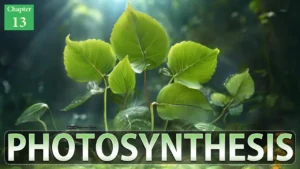Table of Contents
Meristematic Tissue: Characteristics, Classification and Function
After reading this article you will learn about Meristematic Tissue: Characteristics, Classification of meristem and Function
What is meristematic tissue?
Meristematic tissue are rapidly dividing cells found in growing portions of the plant and they give rise various plant organs. Meristematic tissue is commonly called as meristems
Characteristics of meristematic tissues
- Cells are immature and young
- Protoplasm of the cells is very dense
- The meristematic tissue is thin-walled and lack of vacuoles
- They do not store food and exhibit a very high metabolic activity
- They possess a single, large and prominent nucleus
- Cell is devoid of reserve food materials, ER and plastids
Classification of meristematic tissue
Meristematic tissue on the basis of origin
Promeristem
- Originates from the embryo
- The earliest and youngest meristematic tissue
- It is present in embryonic stage
- It give rises to primary meristem
Primary Meristem
- Originates from promeristem
- It is formed early in life & help for plant primary growth
- It give rises to primary permanent tissue
- Found in root, shoot intercalary parts and intrafascicular cambium
Secondary Meristem
- Originates from primary permanent tissue
- It gives secondary permanent tissue during secondary growth
- E.g. Cork cambium & interfascicular cambium
Meristematic tissue on the basis of position
Apical Meristem
- Position: It is present in shoot and root apex
- It helps in increase in height of plants
- Lower plants usually have single apical cells
- In higher plants, apical meristem composed of group of cells
- E.g. Root apex & shoot apex
Intercalary Meristem
- Position: present between permanent tissue regions in the plant
- It is a part of apical meristem and adds to the height of the plant
- Commonly present in monocots, grass and pines
Lateral Meristem
- Position: present on lateral side of stem and root
- It helps in increases the thickness of plants
- E.g. Vascular cambium, cork cambium
Meristematic tissue on the basis of function
Protoderm
- Function: protection from mechanical injury
- It is the outermost plant tissue and forms the epidermis
Procambium
- Function: transport of water and nutrition
- It gives rise to vascular tissue (xylem and phloem)
- It is the innermost meristematic tissue
Ground meristem
- Function: various functions
- It forms the cortex, pericycle and pith
Function of meristematic tissue
- Meristems are actively dividing tissues
- They are responsible for primary and secondary growth of the plant
- All new organs and their growth occur by the division of meristematic tissue
- Secondary tissues such as, wood, cork are also formed due to activity of meristematic tissue
For more detailed information about plant anatomy, download now full study material as PDF



![[PPT] The living world Class 11 Notes](https://rajusbiology.com/wp-content/uploads/2024/06/PPT-The-living-world-Class-11-Notes-300x169.webp)
